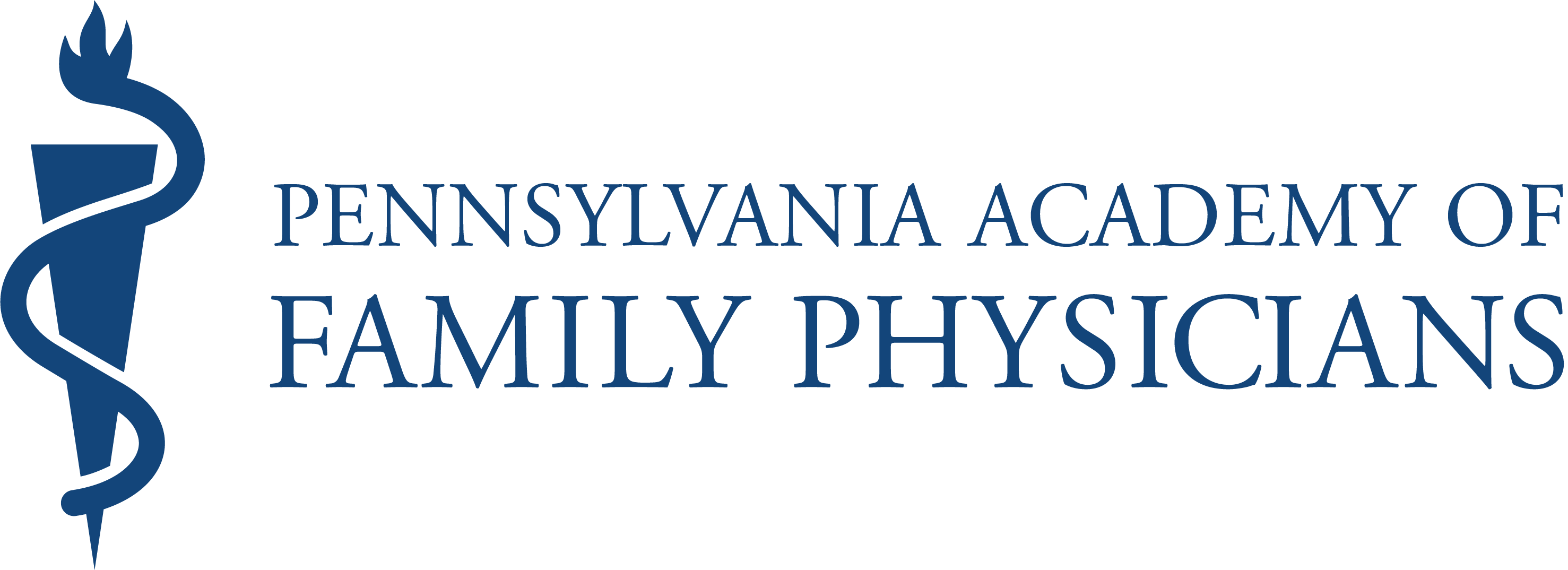Access to Primary Care in Pennsylvania

|
| |
The Pennsylvania Academy of Family Physicians (PAFP) has long been committed to high-quality, accessible and affordable health care for all Pennsylvanians. The PAFP and its nearly 5,000 members support policies aimed at the highest quality of health care and greater access to primary and preventive care services.
Access to care has been and continues to be a critical public policy issue. This is a reflection of the profound concern among Pennsylvanians and policymakers over the frightening scenario of having to go without being able to see a highly trained physician for diagnosis and treatment. There is a pervasive fear of rationing of health care services due to demand surpassing availability. No other provider association is more focused on these concerns in Pennsylvania than the PAFP. We are committed to shifting the physician training paradigm so the educational focus shines most brightly on primary care physicians to ensure our society is enriched with points of health care access.
|
|
How many family medicine physicians practicing in Pennsylvania treat the uninsured? How many are accepting new patients? How many accept Medicare and Medical Assistance? To look into these questions, the PAFP looked within its membership.
The PAFP acquired the assistance of Terry Madonna Opinion Research. Its principal, Dr. G. Terry Madonna, has been conducting polls in Pennsylvania for more than two decades, including many covering state policy matters.
At the start of 2013, our survey finds physicians trained in family medicine are highly accessible, including to patients without insurance, and with the overwhelming majority providing care to those on Medicare and, to a lesser degree, the Commonwealth’s Medicaid Program. |
|
| |
 |
| |

|
| |
According to Madonna:
“[T]he results of interviews with family physicians indicate they continue to accept new patients and provide quality care to Pennsylvania residents regardless of their ability to pay for health care services.”
Dr. Kevin Wong, MD, President of the Pennsylvania Academy of Family Physicians,
responded to the study:
“We are very encouraged to see the results of this report, which suggests that family physicians in Pennsylvania are making themselves easily accessible to the Commonwealth’s patient population, regardless of their insurance.”
The polling revealed forty percent (40%) of practices embrace the principles of the Patient-Centered Medical Home (PCMH), a team-based, physician-led health care model that seeks to maximize health outcomes by providing patients with comprehensive medical care. The PAFP, the leader in advancing this model in the Commonwealth, projects this trend will continue as payers both public and private gravitate toward making PCMH the care model of choice.
|
| |
 |
| |
Health care policy is undoubtedly challenging. Policymakers are today, as they have for decades, constantly evaluating the benefits and drawbacks of various proposals to ensure lower care costs and better access – a process not entirely unlike the clinical community’s enduring exploration for better diagnoses and treatments. This report and the information within reflects many things about the state of health care in Pennsylvania, not the least of which is the professionalism, commitment, and value of family physicians to the benefit of patients throughout the Commonwealth.
|
|
The family medicine specialty has produced some of the hardest working, most dedicated physicians on the front lines of health care. Policymakers’ renewed focus and appreciation of family medicine physicians will help ensure a strong primary care future for Pennsylvanians. The PAFP and its members look forward to working with state and industry leaders to ensure high quality care, greater access for all, and enhanced ways of training more physicians in family medicine. |
Download a PDF of Access to Primary Care in Pennsylvania
| Note: Telephone interviews were completed by PAFP staff with 132 randomly selected PAFP members during January 2013. The survey’s sample error is plus or minus eight-point-two percent (8.2%) and its response rate was seventeen percent (17%). |
